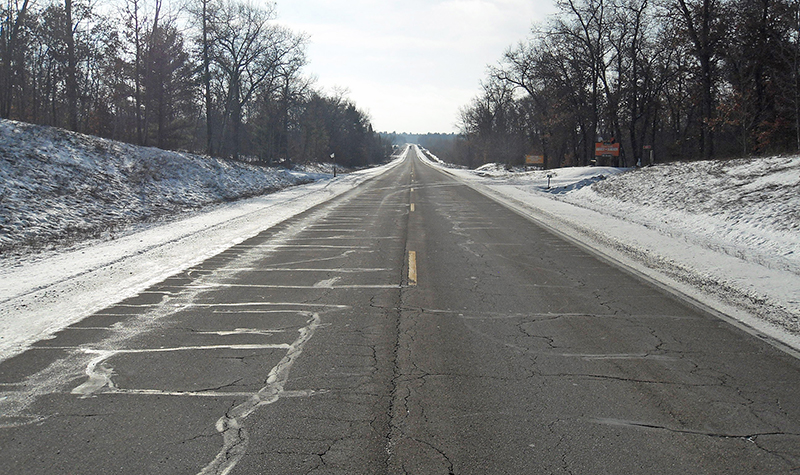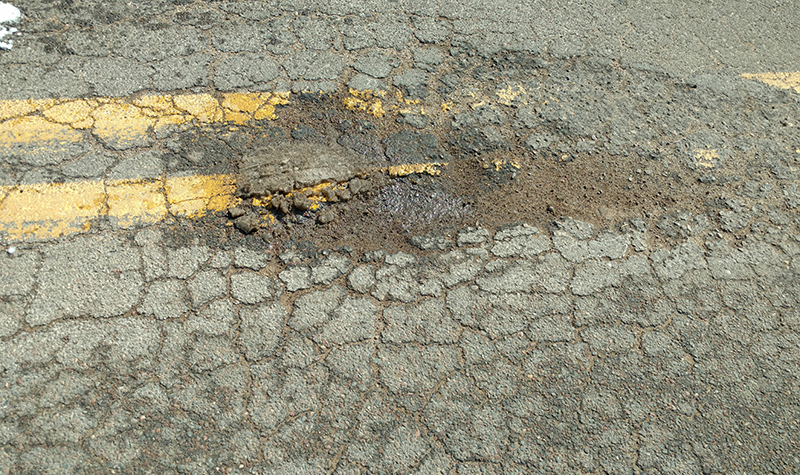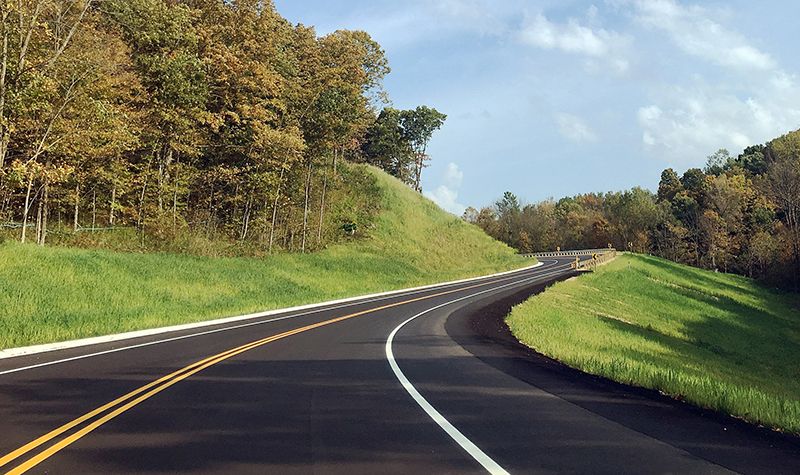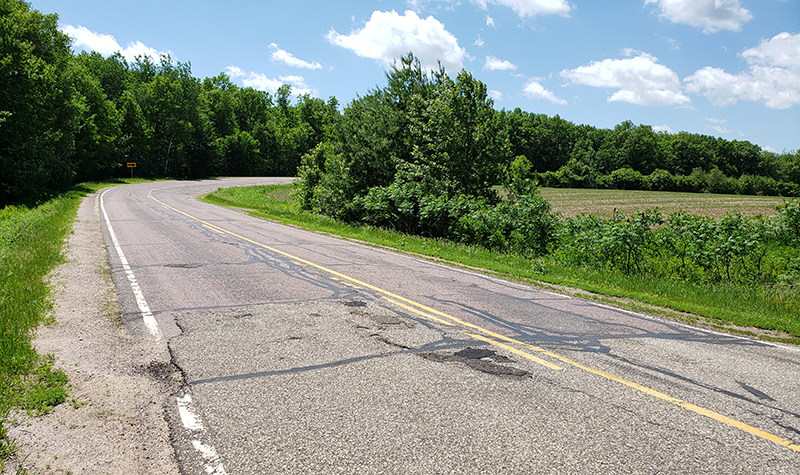How Do You Know What Roads are Good Candidates for Mill and Overlay?
Structural layer coefficient. Excavation below subgrade. K values. Cold in-place recycling. If those terms aren’t familiar to you, not to worry. Transportation engineers are well-versed in the vocabulary of road repairs, and you can rest assured that what’s happening on the other side of those orange barrels is for the benefit of everyone.
Not every roadway project entails complete reconstruction. In fact, there are many steps to a roadway maintenance program, all designed to maximize the safety and lifespan of the road while minimizing cost and inconvenience.

About the Expert:
Mark Petersen, PE, has been a transportation engineer with Ayres since 1999, working on urban and rural highways throughout Wisconsin. His primary responsibilities include project management, urban and rural state highway design, report preparation, utility coordination, and agency coordination.
One of the most common preservation methods in a roadway’s life cycle is called mill and overlay. Mill and overlay refreshes the roadway surface but does not address structural issues. It is an important component in maintaining a community’s infrastructure while keeping budgets and maintenance costs in mind. Because a mill and overlay project only addresses the road surface, it is vital that the road and base be in satisfactory condition for mill and overlay to be practical.
Mill and overlay consists of grinding down the top 1 to 2 inches of existing asphalt and then replacing it with a new layer of hot mix asphalt placed over a binding layer to join the old and new pavements. It will not solve all road degradation issues, and if not done properly, the same damage can crop up in short order.
When is mill and overlay appropriate?
- Good subgrade, base, and cross section
- Good drainage
- Short-term fix is acceptable
- Minor surface distresses such as longitudinal, transverse, and alligator cracking may be present, but no major structural issues or severe potholes
So, what constitutes minor surface distresses that may be addressed via mill and overlay? How rough can a road get before a complete reconstruction is warranted?
Transverse Cracking
Cracks at approximately right angles to the center line are called transverse cracks. Typically a result of movement due to temperature fluctuations along with pavement age, these cracks are often regularly and widely spaced. They usually begin as hairline cracks, and if not properly sealed and maintained, new cracks may develop parallel and closer together. The intent of maintenance is to seal out water, slowing down the cycle of water intrusion, erosion, and damage, which in northern climates includes the effects of the freeze/thaw cycle.

Longitudinal Cracking
Fatigue cracking that follows the flow of traffic is called longitudinal cracking. It is primarily caused by traffic loading along with inadequate bonding during construction. Environmental factors also heavily influence their progression. In addition, they can form as reflective cracks – mirroring damage to the structure underneath that was previously overlaid with asphalt. Cracks near the edge of the pavement can be caused by lack of shoulder support, poor drainage, or movement due to frost. It is crucial to address these cracks before they multiply and subject the roadway to further damage.
Alligator Cracking
If initial cracking isn’t addressed, eventually large sections of roadway further deteriorate. These interconnected cracks on the road surface may begin to resemble alligator skin or chicken wire. In the most severe cases, this patchwork of damage crumbles, leaving hazardous obstacles such as chunks of loose pavement and large potholes. Typically caused by failure of the road surface due to traffic loading or poor base and subgrade support, they often require excavation and extensive patching. Larger areas require reconstruction where drainage issues may need to be addressed.

Engineering for Damage Prevention
Once a road has undergone the mill and overlay process multiple times, or if there are major surface or structural issues, additional options exist, ranging from a more in-depth “pulverize and relay” project to full reconstruction. The projected lifespan of a road, according to the Wisconsin Department of Transportation Facilities Development Manual, is roughly 20 to 25 years for concrete and approximately 18 years for asphalt. Of course, many factors play into those projections, and it’s crucial that regular maintenance is carried out and the surface is not allowed to deteriorate prematurely.
Preventive measures can pave the way for a smooth ride for years to come. By its nature, asphalt is flexible, and the thicker the road surface, the more durable it will be and the heavier traffic loads it can withstand – to a certain degree. However, there is much more to a smooth, strong road than just laying down ever-thicker pavement. Projected traffic loads, geotechnical issues, weather, and drainage are among factors that must be considered when designing a road to last.

The experts at Ayres can help decipher design manuals and assist communities and municipalities in determining the best course of action for a roadway project. From a relatively simple “facelift” to a complete reconstruction, clients can count on Ayres to be their project partner, keeping projects on track, motorists safe, and budgets in check.
Need assistance with a transportation project? Ayres’ experts are ready to help. Contact Mark Petersen or any member of our transportation team.

 By
By
Post a comment: